Special Report
The Deadliest Volcanic Eruptions in the Last 500 Years
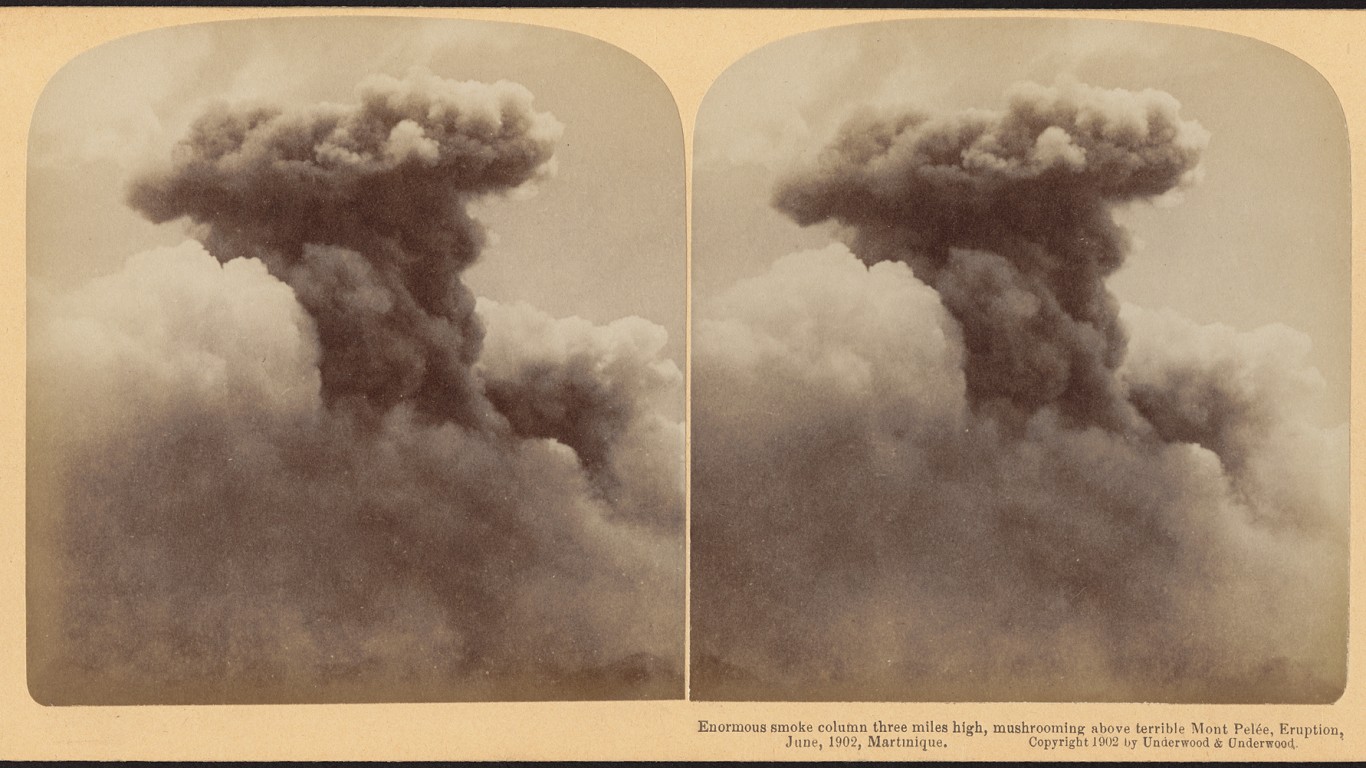
Published:
Last Updated:

The recent eruption of Hawaii’s Mauna Loa, the world’s largest active volcano, serves as a reminder that volcanoes can also cause natural disasters. What’s more, the most recent eruption of Kilauea, a nearby volcano, has been ongoing since September 2021. Although hot lava continues to gush from Mauna Loa, the volcanic activity is not expected at this time to reach any communities, according to Hawaii County Mayor Mitch Roth.
While Hawaiian residents are safe, other populations near volcanic eruptions in the past suffered horrific destruction and death.
To identify the seven deadliest volcanoes since 1500, 24/7 Wall St. reviewed the United States Geological Survey report “Which volcanic eruptions were the deadliest?” The estimated death tolls are not limited to the immediate fatalities from the explosion and lava flow, but also the environmental impacts these events had, such as starvation caused by changes in weather patterns or massive tsunamis.
Far from being a rare occurrence, the Smithsonian National Museum of History, Global Volcanic Program, recorded 77 eruptions worldwide in 2022 at 74 different volcanoes. The list includes eruptions until October, so Mauna Loa’s eruption is not included.
Scientists now have the tools to predict if a volcano will explode, although it is not an exact science. Not so in the past, when volcanoes ranked as one of the most deadly natural disasters. Mount Tambora’s eruption in 1815 in Indonesia killed 92,000, mostly due to starvation as the ash spewed into the air lowered temperatures so much that crops failed. (Find out if it was among the deadliest natural disasters of all time.)
All told, Indonesia has suffered through three destructive volcanic eruptions, which should not be surprising considering the Indonesian island chain was created by volcanic activity. In fact, the islands sit on the tops of volcanoes rising from the ocean.
Though the U.S. was the site of some devastating eruptions, it is not on the list of the deadliest volcanic eruptions. The 1980 eruption of Mt. St. Helens in Washington killed 57, making it the most destructive volcanic disaster in U.S. history. (See the deadliest billion dollar disasters in U.S. history.)
Click here to see the deadliest volcanic eruptions in the last 500 years
7. Lakagigar (Laki), Iceland
> Year: 1783
> Est. deaths: 9,000
> Major causes of death: Starvation
The Lakagigar, or Laki, volcano began spewing lava on June 8, 1783, tearing a 27-kilometer fissure through the landscape. The eruption continued until Feb. 7, 1784, enveloping the European continent in a dry fog. Europeans also reported a sulfuric smell and blood red sunsets, unaware the atmospheric changes were due to a volcanic eruption.
[in-text-ad]
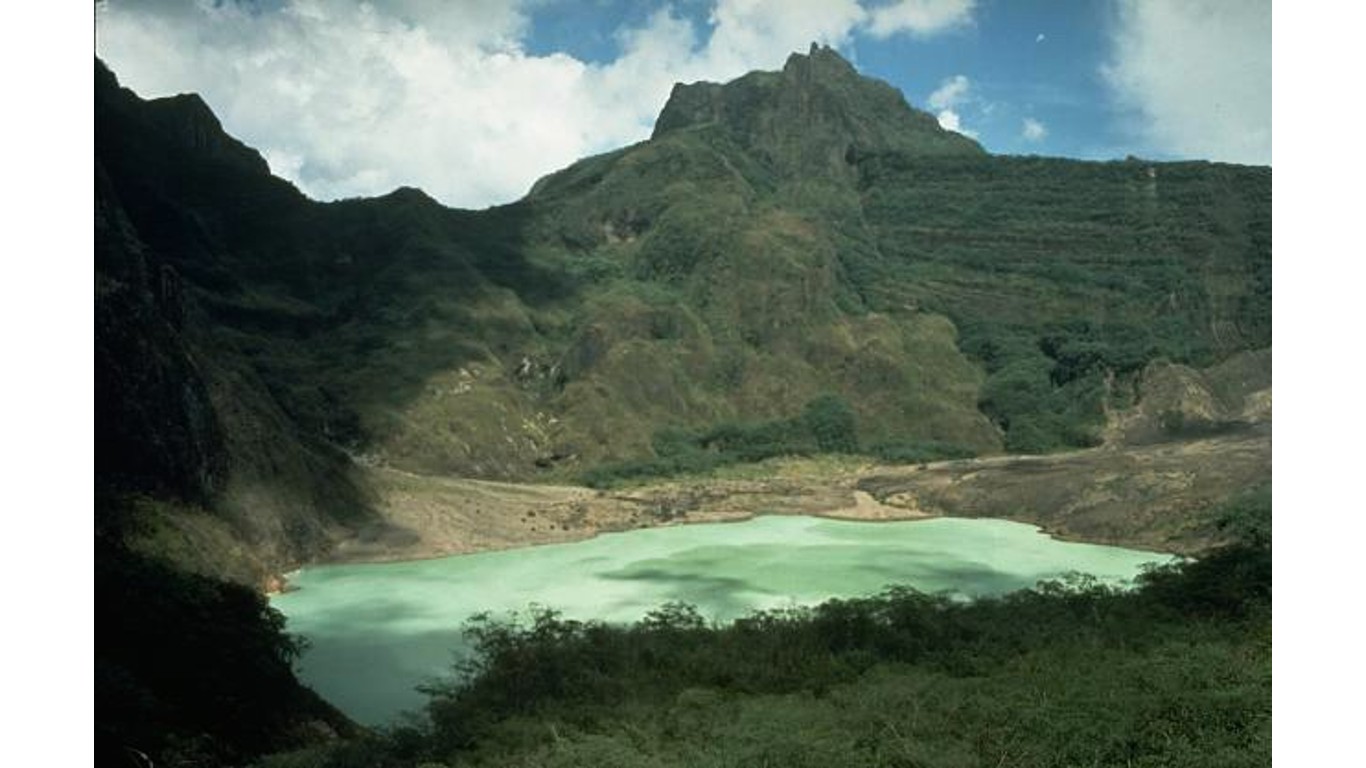
6. Kelut, Indonesia
> Year: 1586
> Est. deaths: 10,000
> Major causes of death: n/a
One of Indonesia’s most active volcanoes, Mount Kelut erupted in 1586, causing 10,000 deaths. The volcano continued to be active and destructive since that time. More recently, an eruption in 1919 killed 5,160, and in 2014, heavy ash from the volcano closed down several airports on Java.
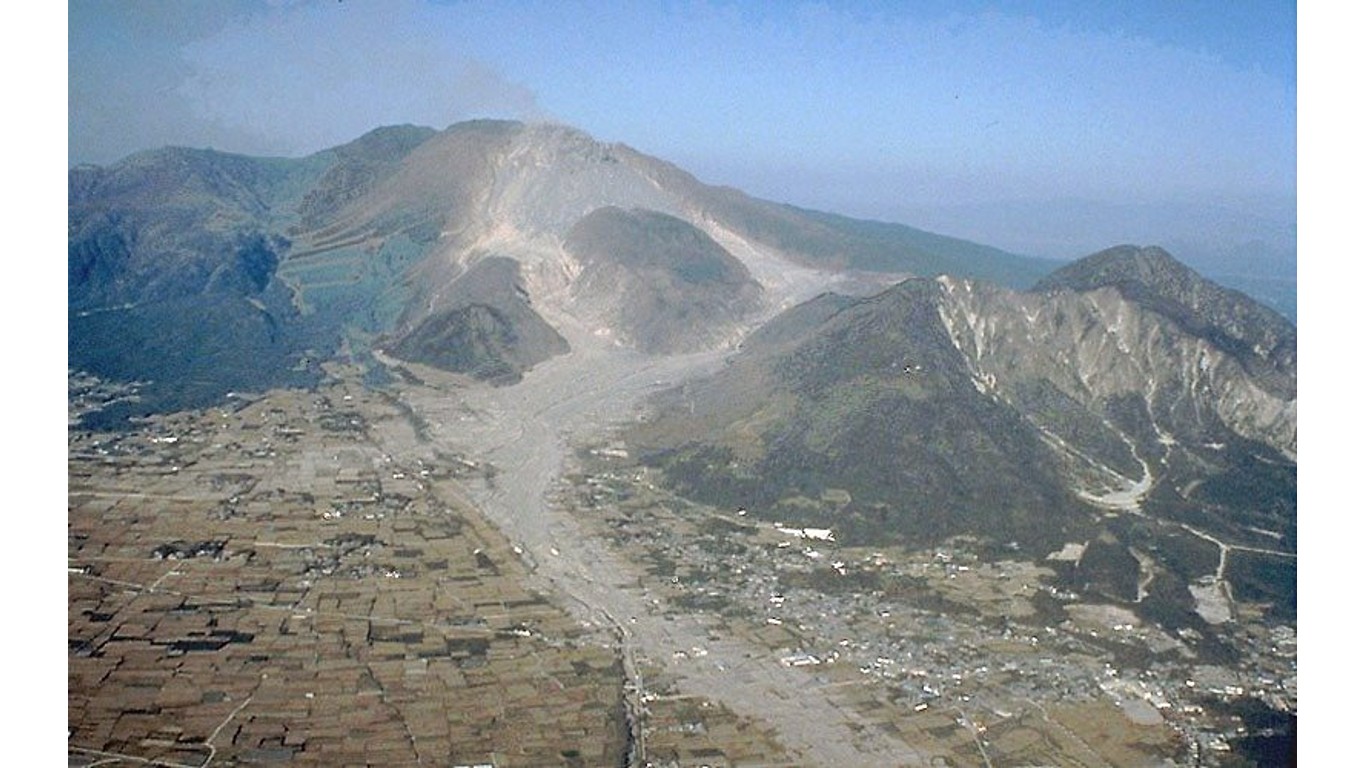
5. Unzendake, Japan
> Year: 1792
> Est. deaths: 15,000
> Major causes of death: Volcano collapse, tsunami
Also called Mount Unzen, the 1792 eruption of the Unzendake volcano was the worst in Japan’s history. A massive volcanic dome collapsed, causing landslides and a tsunami that killed 15,000. In 1990, Mount Unzendake began to spew lava flows again. Volcanic activity continued until the summer of 1993, when hot ash and gas destroyed more than 2,000 buildings in Shimabara City, located beneath the volcano.
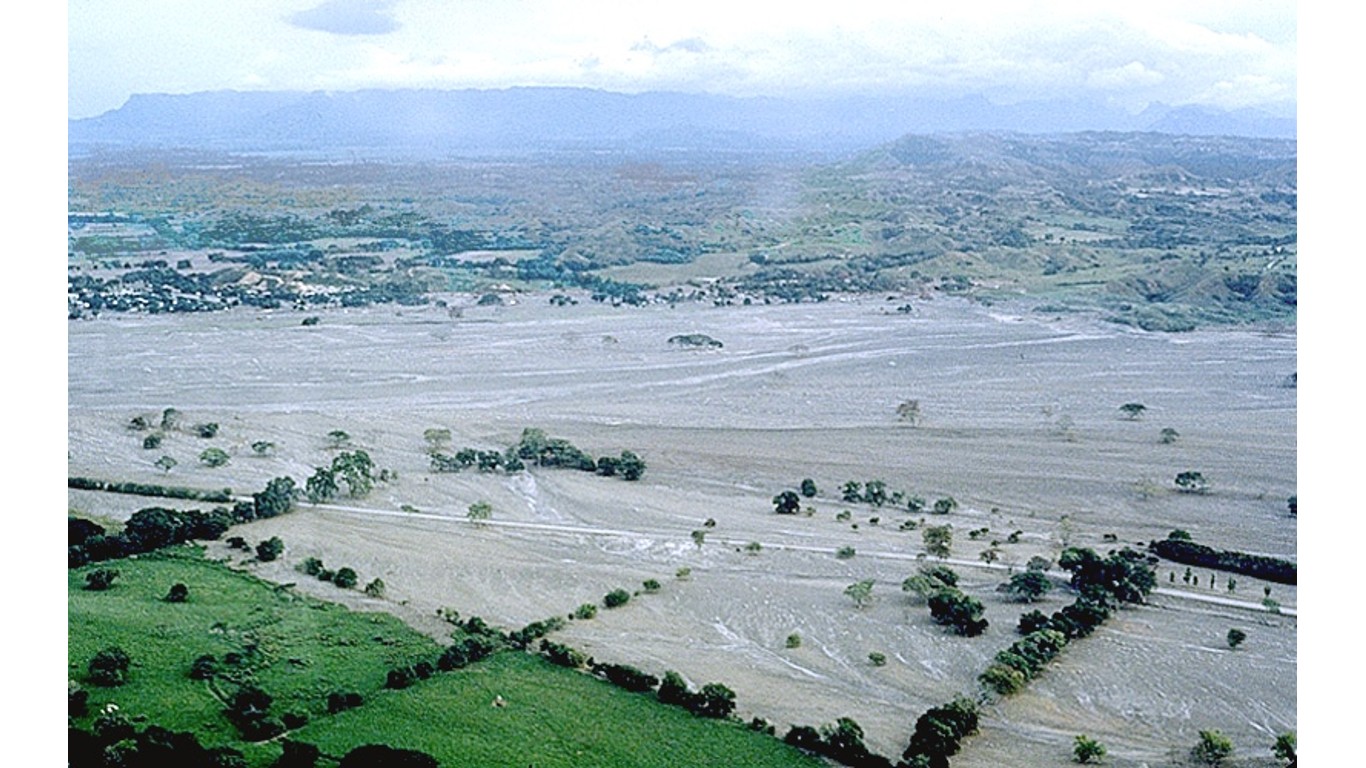
4. Nevado del Ruiz, Colombia
> Year: 1985
> Est. deaths: 25,000
> Major causes of death: Mudflows
Located just 130 kilometers from the capital city of Bogota, Nevado del Ruiz erupted on the morning of Nov. 13, 1985, sending a mixture of hot ash and lava into the skies. Destructive mudslides called lahars followed, sweeping through villages and the town of Armero. More than 23,000 died in what is considered Colombia’s worst natural disaster.
[in-text-ad-2]
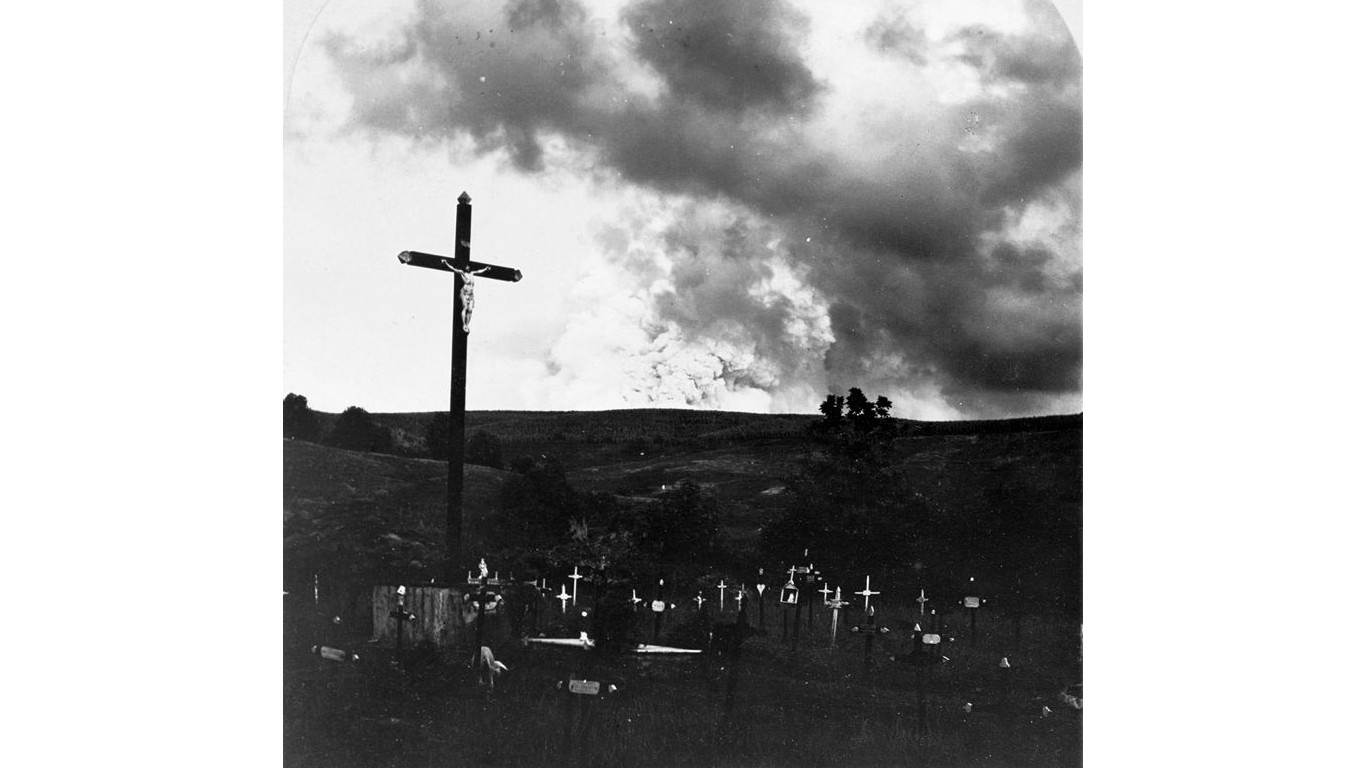
3. Mont Pelée, Martinique
> Year: 1902
> Est. deaths: 30,000
> Major causes of death: Pyroclastic flows
Residents of St. Pierre in Martinique thought of Mont Pelée as a “gentle giant.” Soaring 1,400 meters above the bustling city, the volcano was mostly quiet for half a century, only spewing a small amount of ash in 1851 and causing a few minor mudslides over the years. That all changed in April 1902, when small tremors rocked the city and sulfurous fumes hit the atmosphere. On May 8, a blast of volcanic hot gas and debris destroyed the city of St. Pierre, killing 30,000.
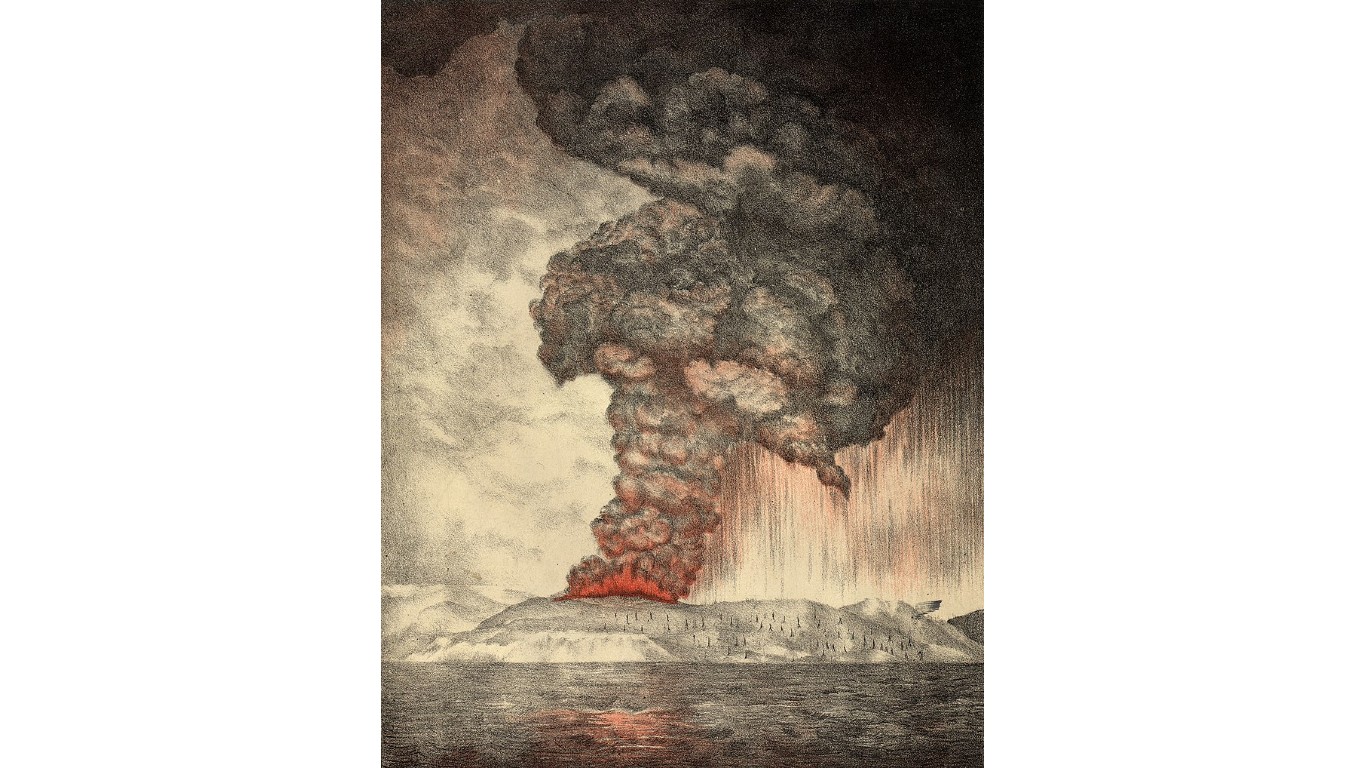
2. Krakatau, Indonesia
> Year: 1883
> Est. deaths: 36,000
> Major causes of death: Tsunami
It is believed that a volcano eruption in the fifth or sixth century created the small volcanic island of Krakatoa. Located about 100 miles west of Jakarta, Krakatoa’s most deadly eruption began on Aug. 26, 1883 as gas and debris shot 15 miles into the air. The eruption started at 1 p.m. and continued over the next 21 hours as more powerful explosions rocked the volcano. The strongest blast occurred at 10 a.m. on Aug. 27. Most of those killed perished in tsunamis as the volcano collapsed. The Krakatoa eruption was so famous it spawned a 1968 disaster film, “Krakatoa, East of Java.”
[in-text-ad]
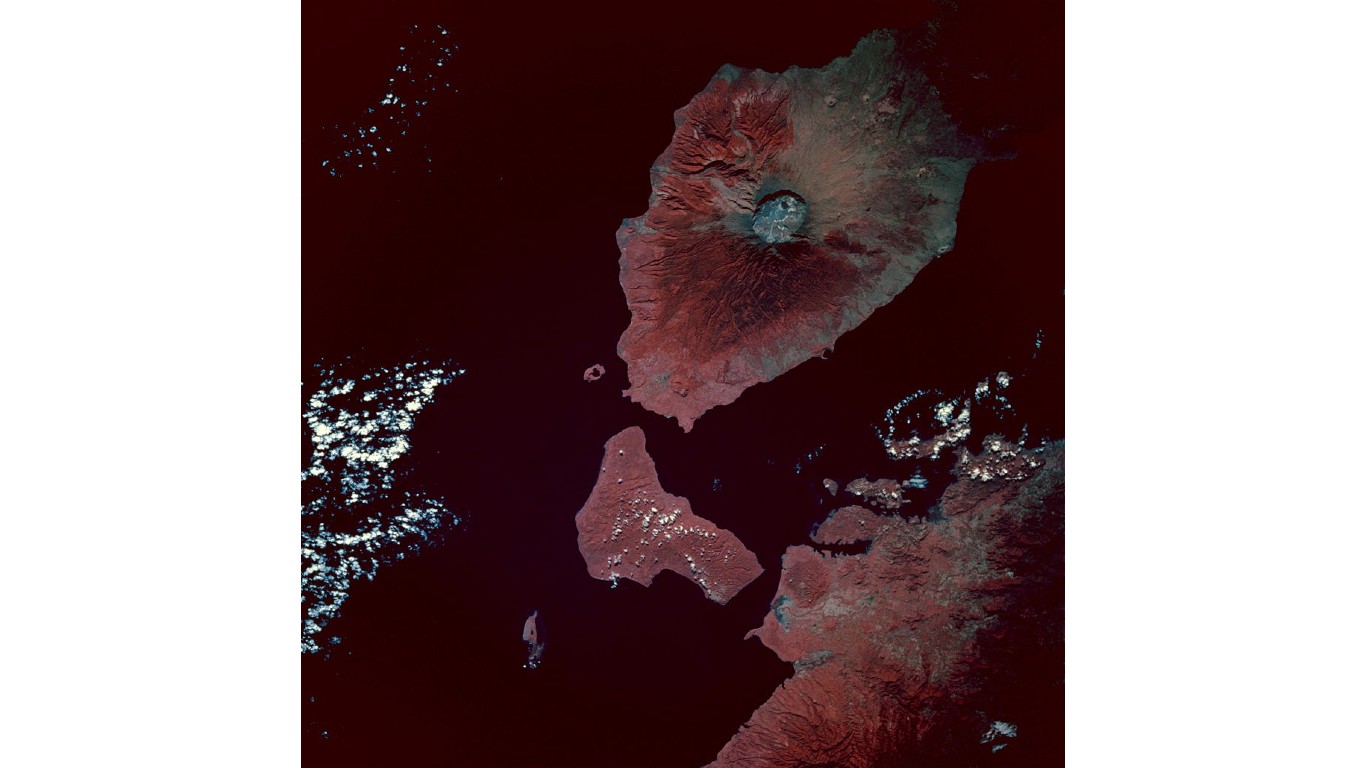
1. Tambora, Indonesia
> Year: 1815
> Est. deaths: 92,000
> Major causes of death: Starvation
Mount Tambora’s most destructive eruption began on April 5, 1815, as a series of small tremors. Pyroclastic flows, a mixture of hot rock fragments, hot gasses, and trapped air, followed. As much as 36 cubic miles of ash, pumice, other rocks, and aerosols, including sulfur, spread into the atmosphere, lowering the average global temperature by 3 °C (5.4 °F), leading to crop failures and starvation.
After two decades of reviewing financial products I haven’t seen anything like this. Credit card companies are at war, handing out free rewards and benefits to win the best customers.
A good cash back card can be worth thousands of dollars a year in free money, not to mention other perks like travel, insurance, and access to fancy lounges.
Our top pick today pays up to 5% cash back, a $200 bonus on top, and $0 annual fee. Click here to apply before they stop offering rewards this generous.
Flywheel Publishing has partnered with CardRatings for our coverage of credit card products. Flywheel Publishing and CardRatings may receive a commission from card issuers.
Thank you for reading! Have some feedback for us?
Contact the 24/7 Wall St. editorial team.